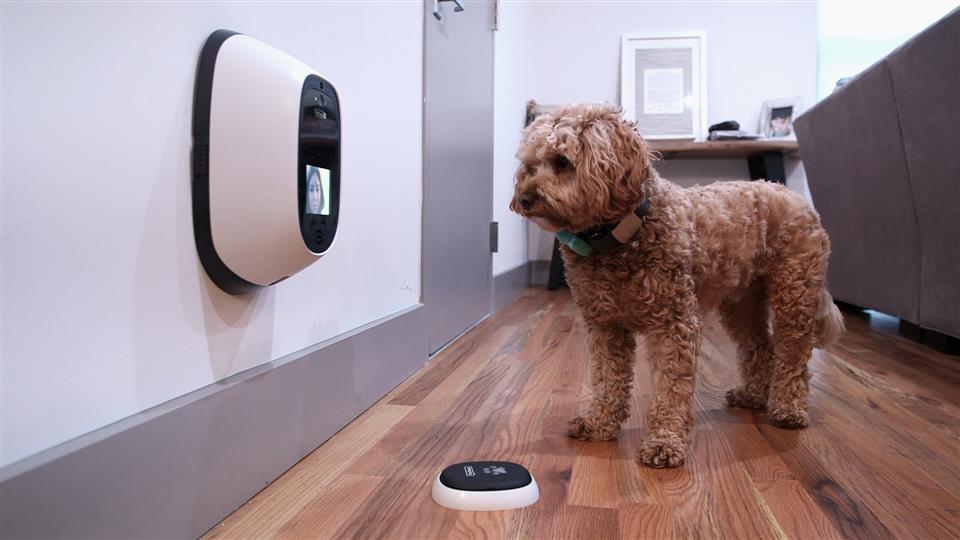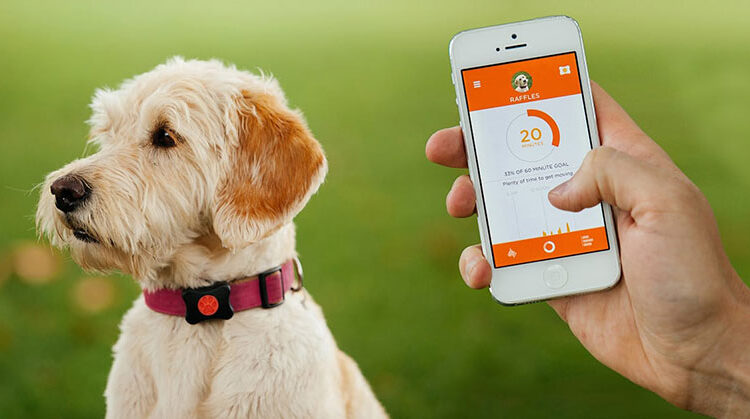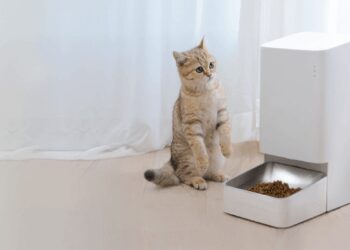The bond between humans and their animal companions has deepened significantly over the centuries. Pets are no longer merely animals kept for utility or amusement; they are cherished family members, deserving of the best possible care. This profound shift in perception has fueled a remarkable revolution in the pet care industry, particularly driven by the rapid advancements in smart technology. What was once a niche market for high-tech gadgets has transformed into a mainstream phenomenon, offering innovative solutions that enhance pet well-being, simplify owner responsibilities, and strengthen the unique connection we share with our furry, feathered, or scaled friends.
From real-time health monitoring to automated feeding and interactive entertainment, smart pet tech is reshaping how we understand, interact with, and care for our beloved animals. This comprehensive guide delves into the various facets of this technological revolution, exploring the trends, benefits, and future potential of smart pet care.
The Dawn of Digitally Enhanced Pet Care

For generations, pet care relied heavily on intuition, observation, and traditional veterinary visits. While these remain crucial, smart technology introduces an unprecedented level of data, automation, and remote accessibility. The underlying principle is simple: leverage the power of the Internet of Things (IoT), Artificial Intelligence (AI), and advanced sensors to provide insights and conveniences that were previously unimaginable.
The market for pet tech is experiencing explosive growth, with projections indicating continued expansion. This surge is fueled by several factors:
A. Increased Pet Ownership: More households worldwide are welcoming pets, driving demand for innovative products.
B. Humanization of Pets: Owners are increasingly willing to invest in products that improve their pets’ quality of life.
C. Technological Advancements: Miniaturization of sensors, improved battery life, and more powerful AI algorithms make sophisticated devices more accessible.
D. Busy Lifestyles: Modern pet owners often have demanding schedules, making automated and remote solutions highly appealing.
E. Preventive Healthcare Focus: There’s a growing emphasis on proactive health management, which smart tech facilitates.
These drivers collectively contribute to an ecosystem where technology isn’t just a novelty but an essential tool for responsible and compassionate pet ownership.
Key Categories of Smart Pet Technology
The landscape of smart pet tech is diverse, encompassing a wide array of devices and services designed to address various aspects of pet care.
A. Health Monitoring and Wearables
Perhaps the most significant impact of smart tech in pet care lies in health monitoring. Pets, by nature, cannot articulate their discomfort or illness. Wearable devices bridge this communication gap, providing owners and veterinarians with crucial data.
- Smart Collars and Harnesses: These are arguably the most common type of pet wearable. Equipped with sensors, they can track:
- Activity Levels: Steps taken, calories burned, play time, and rest periods. This helps identify changes in energy that might indicate illness or boredom.
- Sleep Patterns: Monitoring sleep quality and duration can reveal stress, pain, or underlying health issues.
- Heart Rate and Respiration: Early detection of abnormalities can prompt timely veterinary intervention.
- Temperature: Some advanced collars can monitor body temperature, alerting owners to fever or hypothermia.
- GPS Tracking: An invaluable feature for preventing lost pets and quickly locating them if they do wander off. This gives pet owners immense peace of mind.
- Geofencing: Allows owners to set virtual boundaries, receiving alerts if their pet leaves a designated safe area.
- Implantable Microchips: While not “smart” in the real-time data sense, these tiny chips are often enhanced with better reader technology. They serve as permanent identification, vastly increasing the chances of reuniting lost pets with their owners. Future iterations may incorporate more advanced biometric data.
- Smart Bowls: These go beyond simple feeding. They can weigh food portions, track consumption, and even identify individual pets (if multiple pets use the same bowl). This data helps monitor dietary intake, crucial for weight management and detecting appetite changes.
B. Automated Feeding and Hydration Systems
For busy pet owners, ensuring consistent feeding schedules and access to fresh water can be a challenge. Automated systems offer a convenient and reliable solution.
- Smart Feeders: These devices can be programmed to dispense precise portions of food at scheduled times. Many come with:
- App Control: Owners can adjust feeding schedules and portion sizes remotely via a smartphone app.
- Voice Recording: Some allow owners to record a message that plays at mealtime, adding a familiar touch for the pet.
- Slow-Feeding Options: Designed to prevent pets from eating too quickly, reducing the risk of digestive upset.
- Anti-Jamming Mechanisms: Ensures smooth delivery of kibble.
- Food Level Sensors: Alert owners when the food supply is running low.
- Smart Water Dispensers: These fountains and bowls ensure pets always have access to fresh, filtered water.
- Circulating Water: Encourages pets to drink more, promoting hydration and kidney health.
- Filtration Systems: Remove impurities, odors, and tastes, making the water more appealing.
- Water Level Sensors: Notify owners when the reservoir needs refilling.
C. Pet Monitoring and Security
Concerns about what pets do when left alone are common. Smart monitoring solutions provide visual and audio connection, offering reassurance and enabling remote interaction.
- Pet Cameras: These cameras allow owners to see and hear their pets from anywhere via a smartphone app. Advanced features include:
- Two-Way Audio: Enables owners to talk to their pets and hear their responses.
- Treat Dispensers: Some cameras can remotely dispense treats, allowing for positive reinforcement or simply a fun interaction.
- Night Vision: For monitoring pets in low-light conditions.
- Motion and Sound Detection: Alerts owners to unusual activity or sounds.
- AI-Powered Behavior Analysis: Can distinguish between normal pet activity and signs of distress, excessive barking, or destructive behavior.
- Smart Pet Doors: These offer controlled access for pets while enhancing home security.
- Microchip or Collar Tag Recognition: Only allows authorized pets to enter or exit.
- Scheduling: Owners can set specific times for the door to be active.
- Security Features: Prevents unwanted animals or intruders from entering.
D. Entertainment and Mental Stimulation
Beyond basic needs, smart tech is increasingly focused on enriching pets’ lives and preventing boredom or anxiety.
- Interactive Toys: These toys engage pets even when owners are away.
- Remote-Controlled Toys: Allow owners to play with their pets via an app.
- Automated Laser Pointers or Ball Launchers: Provide exercise and entertainment.
- Puzzle Toys with Treat Dispensing: Encourage problem-solving and mental engagement.
- Robot Companions: While still nascent, the concept of robotic companions that can interact, play, and even offer comfort to pets is emerging. These might feature:
- AI-Driven Interaction: Adapting to a pet’s personality and play style.
- Sensors: To detect a pet’s presence and mood.
- Movement and Sound: Mimicking real-life playmates.
E. Smart Litter Boxes
For cat owners, litter box maintenance is a constant chore. Smart litter boxes automate this process, making it cleaner and more convenient.
- Self-Cleaning Litter Boxes: These devices automatically scoop waste into a sealed compartment, often after a set delay or when the cat leaves the box.
- Odor Control: Many include carbon filters or other mechanisms to neutralize odors.
- Health Monitoring: Some advanced models can track a cat’s litter box usage, weight, and waste consistency, providing early warnings for potential health issues like urinary tract infections or digestive problems.
- App Connectivity: Allows owners to monitor usage, remotely initiate cleaning cycles, and receive alerts.
F. Telemedicine and Virtual Veterinary Care
The COVID-19 pandemic accelerated the adoption of telemedicine across many industries, including veterinary care. Smart tech plays a crucial role in enabling remote consultations and diagnostics.
- Virtual Consultations: Owners can connect with veterinarians via video calls for non-emergency issues, follow-ups, or general advice.
- AI-Powered Symptom Checkers: While not a replacement for a vet, these tools can help owners understand potential symptoms and decide if a physical visit is necessary.
- Remote Diagnostics: In the future, more sophisticated devices might allow for basic diagnostic tests to be performed at home, with results transmitted directly to the vet.
The Benefits of Embracing Smart Pet Tech
![]()
The integration of technology into pet care offers a myriad of advantages for both pets and their human companions.
A. Enhanced Health Monitoring and Early Detection
The ability to continuously monitor vital signs, activity, and sleep patterns means that subtle changes indicating a health issue can be detected much earlier than with traditional methods. This proactive approach can lead to:
- Faster Diagnosis: Prompt alerts allow owners to seek veterinary attention sooner, often before a condition becomes severe.
- Preventive Care: Data trends can help veterinarians recommend personalized preventive measures.
- Chronic Disease Management: For pets with conditions like diabetes or arthritis, continuous monitoring helps manage their health more effectively.
B. Increased Convenience and Peace of Mind
For busy owners, smart pet tech automates routine tasks and provides a constant connection to their pets.
- Automated Routines: Feeders and litter boxes reduce daily chores, freeing up time.
- Remote Monitoring: Knowing you can check on your pet from anywhere alleviates anxiety when you’re away.
- Improved Security: Smart doors and trackers offer enhanced safety against loss or unauthorized entry.
C. Better Behavioral Insights
AI-powered monitoring can identify unusual behaviors that might signal stress, anxiety, or boredom.
- Understanding Pet Needs: Owners can gain a deeper understanding of their pet’s daily habits and emotional states.
- Targeted Interventions: If a pet exhibits excessive barking or destructive behavior, the data can help pinpoint triggers and allow for more effective training or environmental enrichment.
D. Enriched Pet Lives
Interactive toys and intelligent systems provide mental and physical stimulation, particularly for pets left alone for long periods.
- Reduced Boredom and Anxiety: Engaging toys and automated interactions can keep pets stimulated and happy.
- Improved Fitness: Activity trackers encourage owners to ensure their pets get enough exercise.
E. Stronger Human-Animal Bond
By providing deeper insights and more opportunities for interaction, smart tech can ultimately strengthen the relationship between pets and their owners. Understanding a pet’s needs and responding to them proactively fosters a more harmonious coexistence.
Challenges and Considerations
While the “Smart Pet Tech Revolution” presents exciting opportunities, it’s essential to acknowledge potential challenges and considerations.
A. Cost
Many advanced smart pet devices come with a significant price tag, making them inaccessible to all pet owners. As technology matures, prices may decrease, but initial investment can be a barrier.
B. Data Privacy and Security
These devices collect sensitive data about pets and, by extension, their owners’ routines. Ensuring robust data privacy and cybersecurity measures is paramount to prevent breaches and misuse of information.
C. Over-Reliance on Technology
While beneficial, smart tech should complement, not replace, direct human interaction and professional veterinary care. An over-reliance could weaken the human-animal bond or lead to missed cues that only direct observation can provide.
D. Battery Life and Connectivity
For wearable devices, battery life is crucial. Constant recharging can be inconvenient. Similarly, consistent internet connectivity is essential for many smart features to function effectively.
E. Pet Acceptance
Not all pets will readily adapt to wearing collars or interacting with new gadgets. Some may find certain devices uncomfortable or intimidating, requiring owners to prioritize their pet’s comfort and preferences.
F. Accuracy and Reliability of Data
The accuracy of data collected by these devices can vary. It’s important for owners to understand that these tools provide insights but should not be the sole basis for critical health decisions, which should always involve a veterinarian.
Conclusion
The “Smart Pet Tech Revolution” is fundamentally transforming the landscape of animal care, ushering in an era of unprecedented convenience, insight, and connection. From wearable health monitors that act as silent guardians to automated systems that simplify daily routines, these innovations empower pet owners to provide the best possible care for their beloved companions.
While challenges such as cost, data privacy, and the importance of maintaining human interaction remain, the trajectory of smart pet technology points towards a future where pet well-being is enhanced through proactive, data-driven, and seamlessly integrated solutions. Embracing these advancements responsibly will not only streamline pet ownership but also deepen the cherished bond we share with our animal family members, ensuring they lead happier, healthier, and more fulfilling lives.













